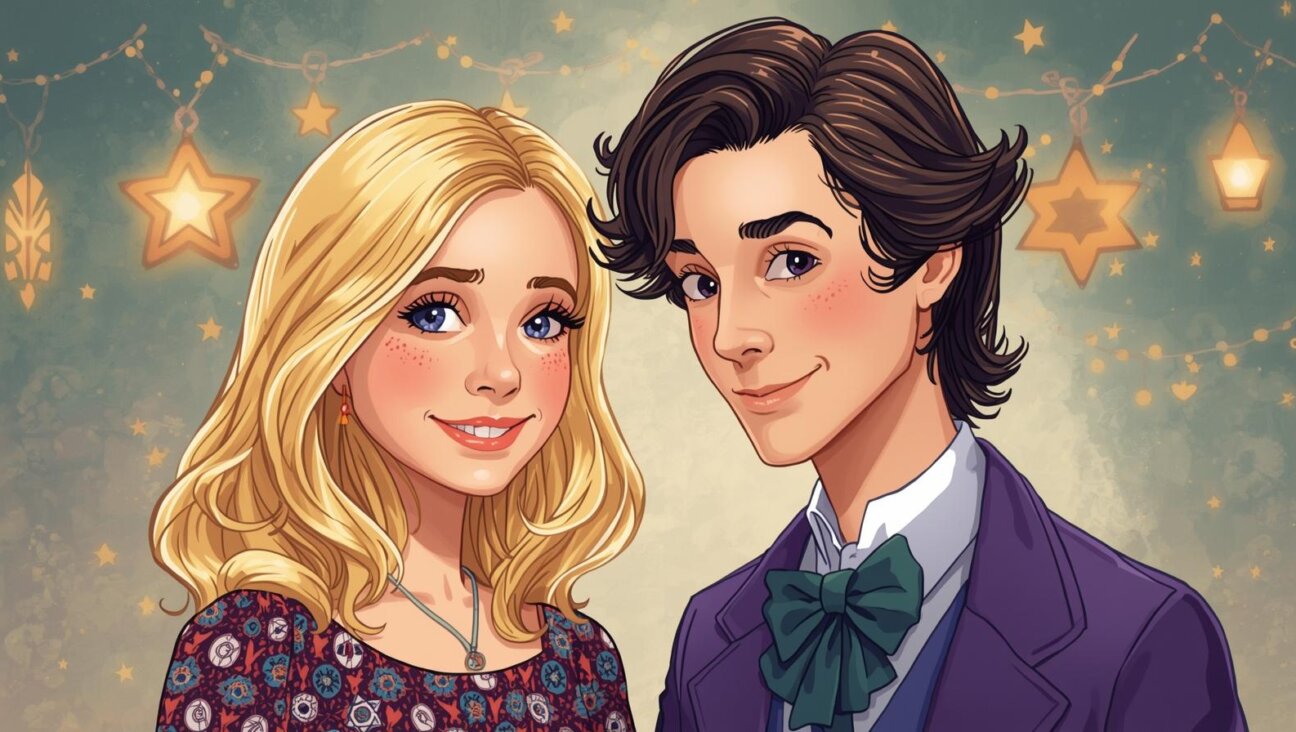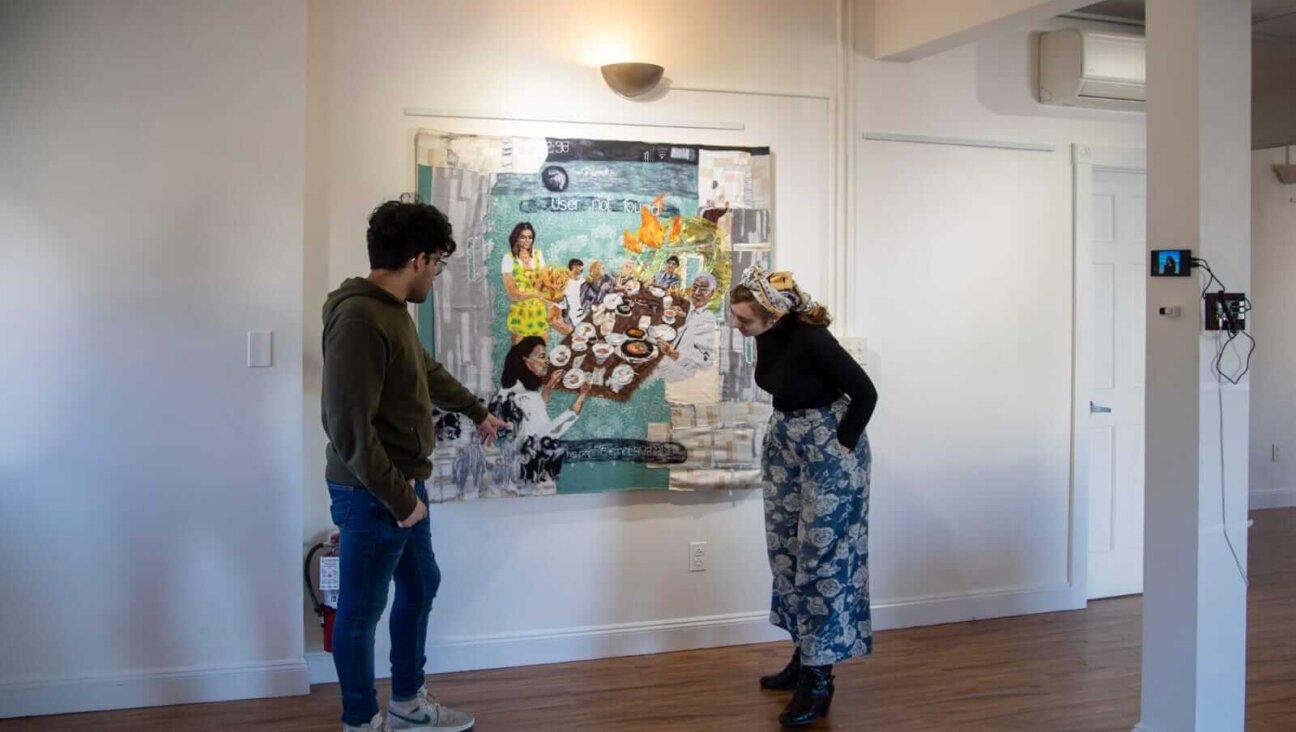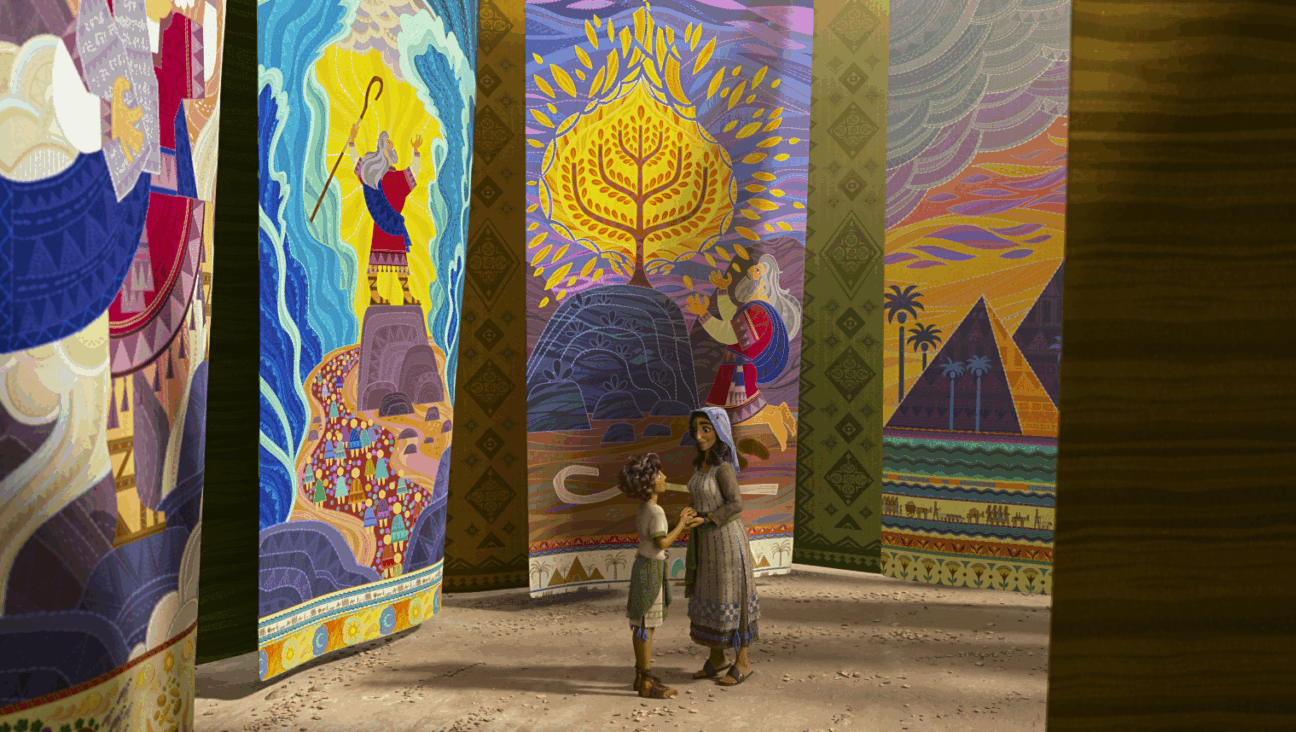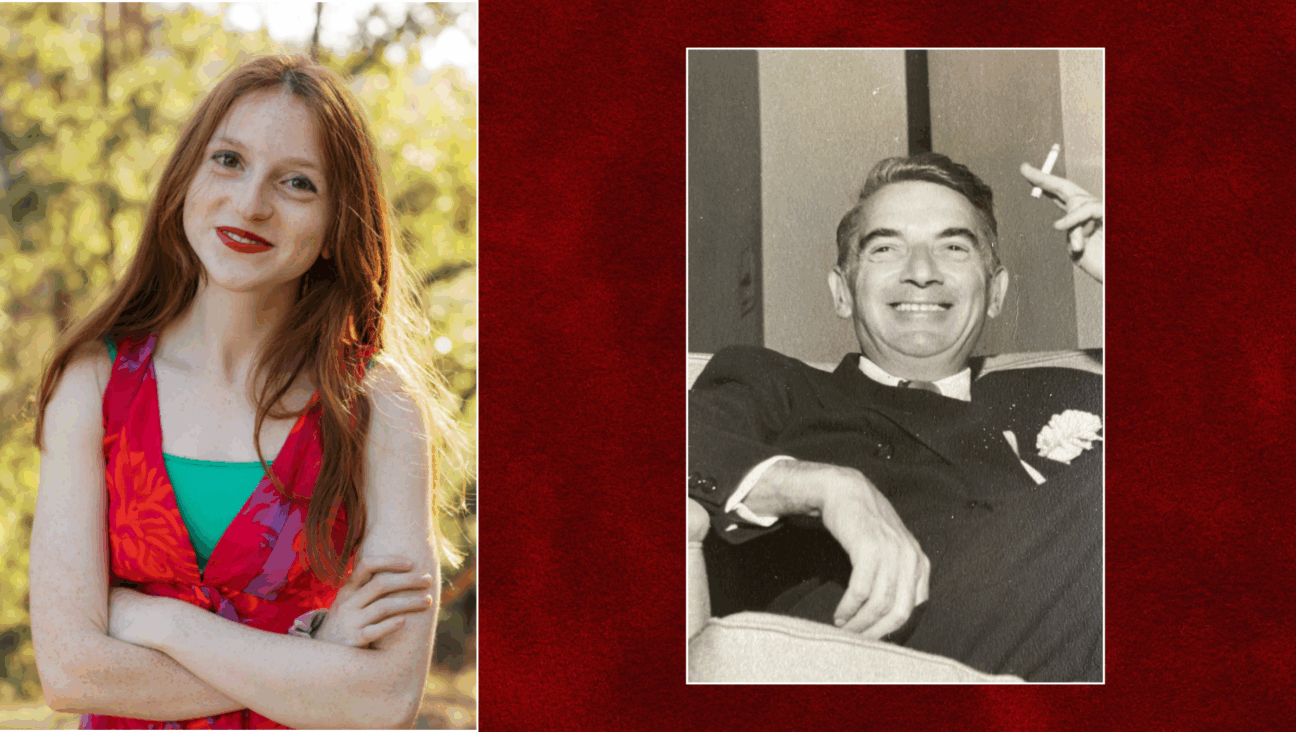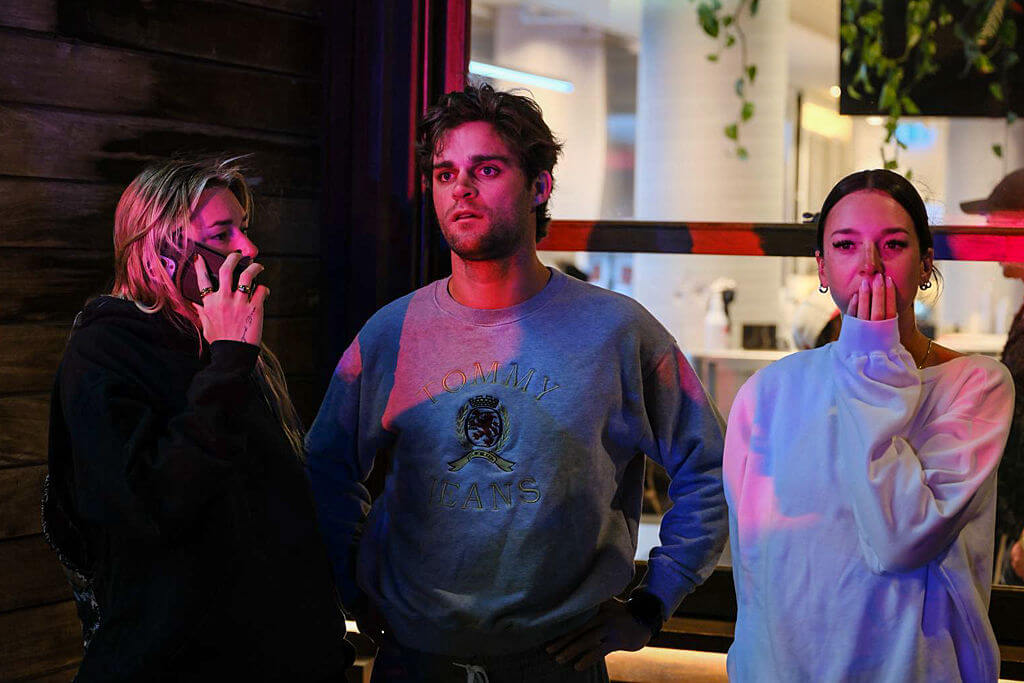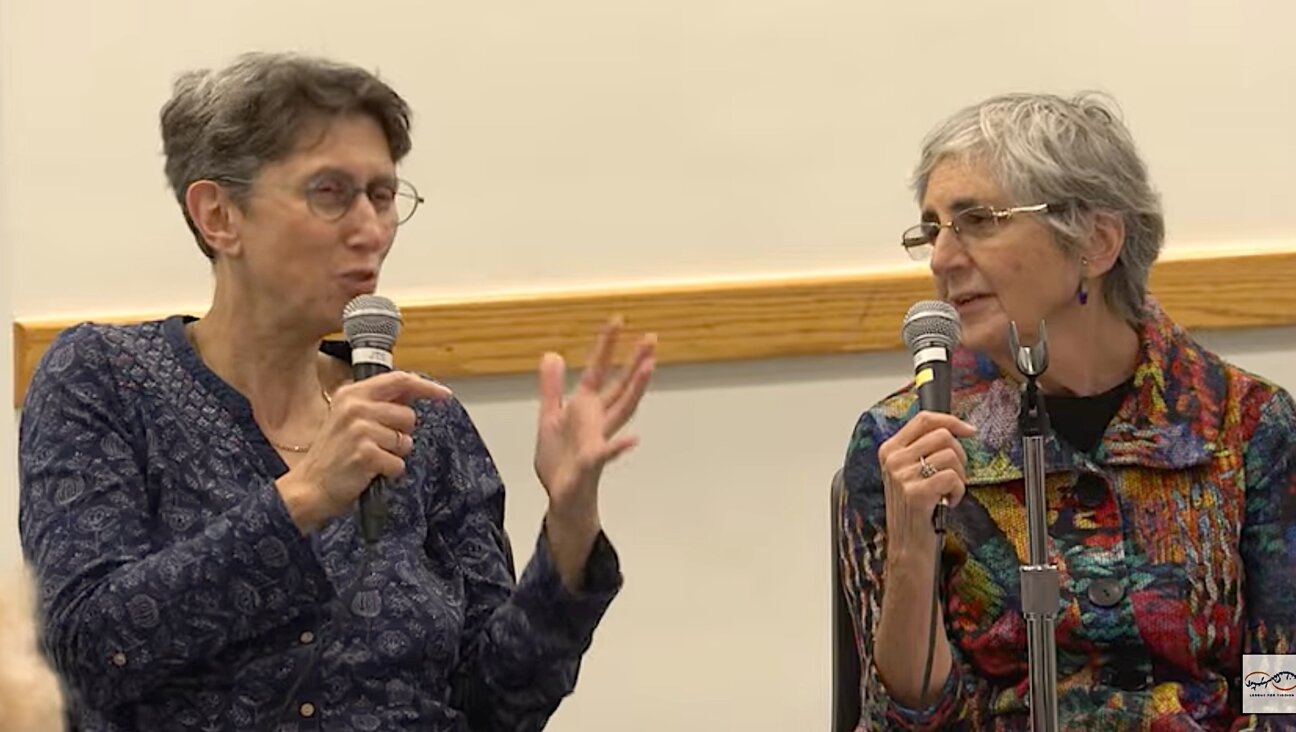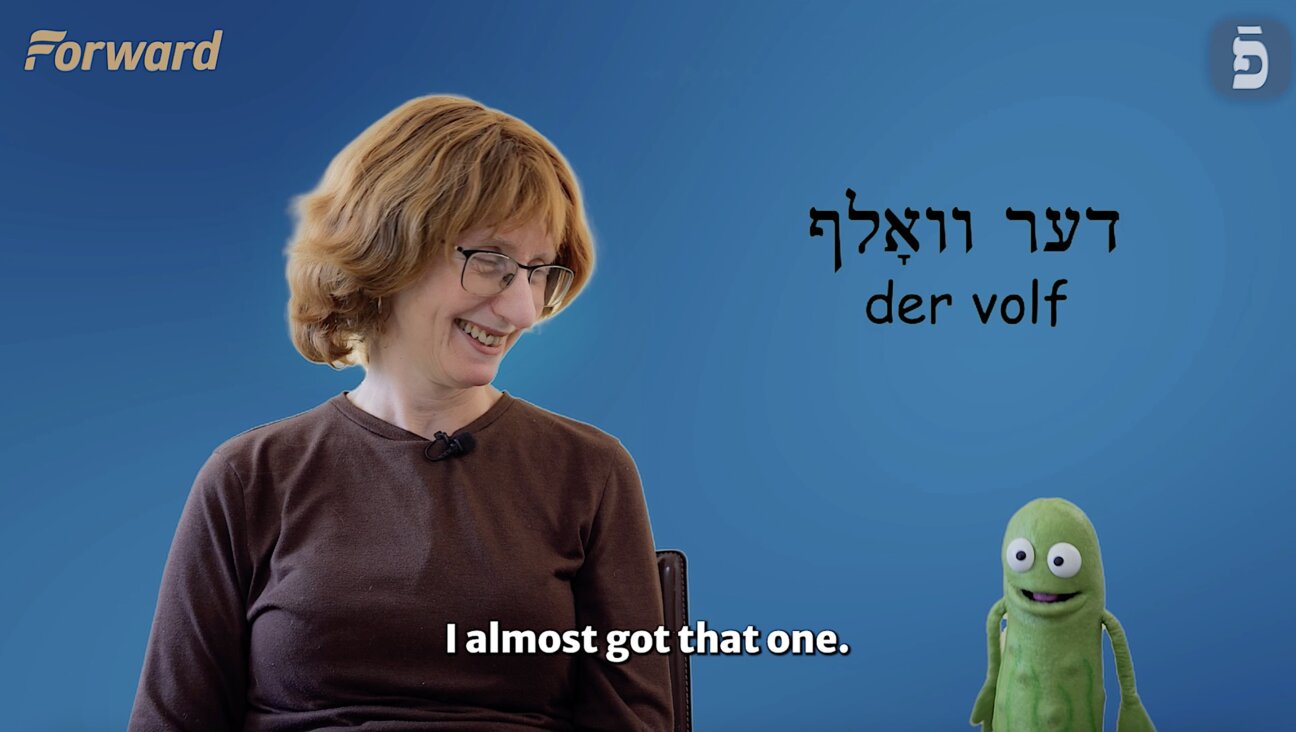Everything’s terrible — but at least there are Moomins
Coming out of WWII, one Finnish author and illustrator created something magical
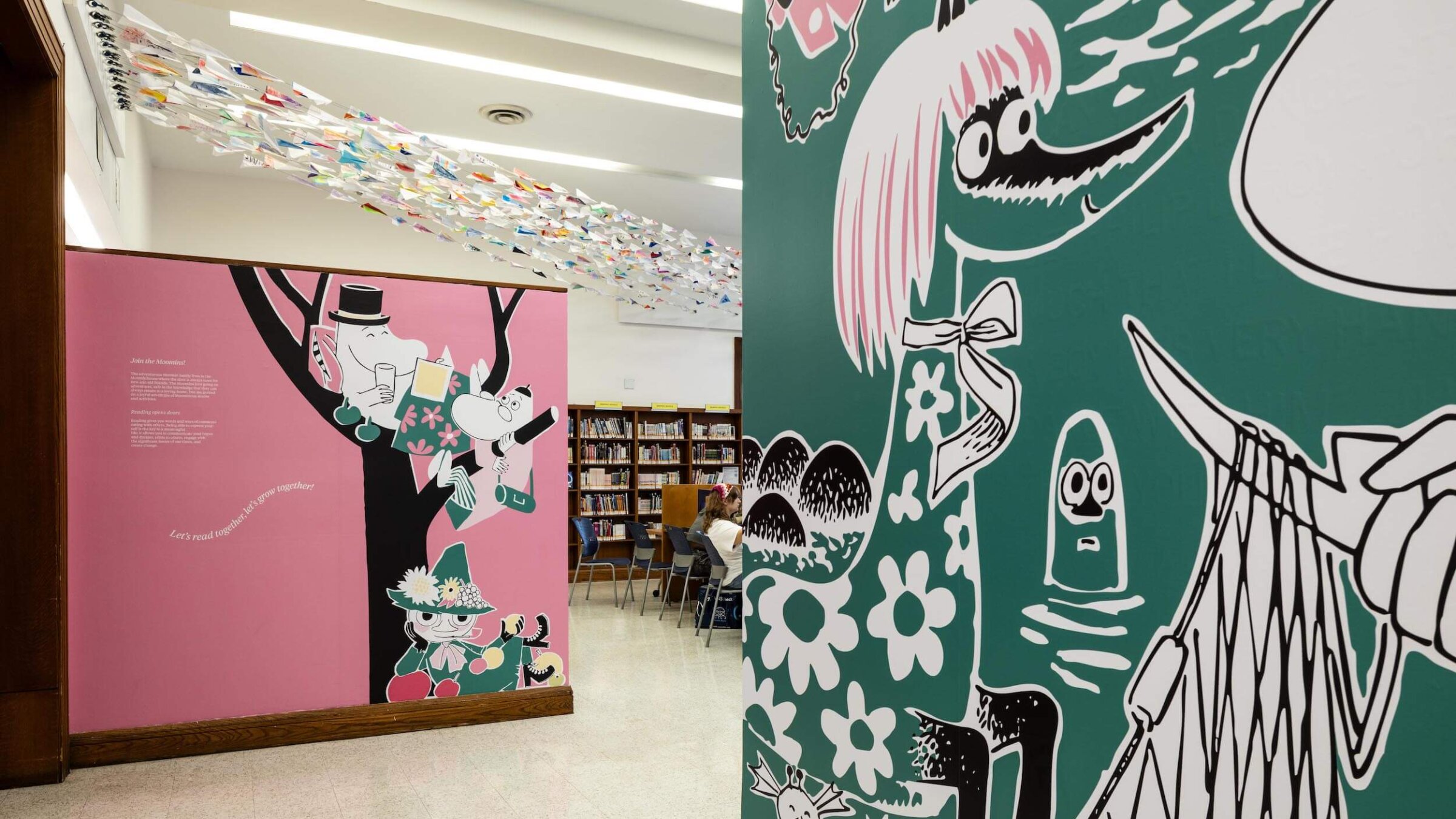
Tove Jansson’s Moomins take over the Brooklyn Public Library. Photo by Gregg Richards
In 1945, World War II ended; Europe was left in shambles; and in Finland, a family of pale, bulbous-nosed trolls made their quiet debut. It was a rare moment. Much of the world had been transformed into a place defined by brutality, but amid the destruction, the Finnish author, painter and illustrator Tove Jansson had found a way to capture the hidden magic of reality, as seen by children. The future was bleak; the past was bleaker; but at least there were Moomins.
One July Wednesday, I left the Forward offices in lower Manhattan and zipped back to Brooklyn on a mission to renew my library card. I had spent my day editing a story about an app that issues alerts when Immigration and Customs Enforcement is conducting nearby raids, and I was weary in both body and spirit. In front of the Central Library, with its grand gilded columns, a DJ was playing Afrobeats; people had gathered to dance in the heavy, humid heat. I felt a little disoriented by the transition from the gloomy news to the outburst of summer joy.
I pushed through the crowd and into the library, and was immediately confronted by Moomins. Images of the sweet, white, rotund creatures — the center of an eccentric fairy-tale world created by Jansson, complete with books, films, comic strips and a series of mugs — adorned the walls. They were there as part of an exhibit on Jansson, 80 years after she published The Moomins and the Great Flood, the picture book that launched the Moomin empire.
It is impossible to see a Moomin and feel anything but joy. Something about them seems like the embodied spirit of childhood — even if, like me, you first encountered them as an adult. With those wide, innocent eyes and pert, curious ears, there’s an inherent gentle wonderment in them that can’t help but be restorative.
I replaced my card, and went off in search of the first novel in the Dark is Rising sequence by Susan Cooper, a middle-grade classic that, like the Moomins, I missed during my own childhood. I’d been on a kick of revisiting beloved stories for children. After nearly two years of covering a Middle Eastern war and all the domestic turmoil it inspired, and six months of scrambling to catch up with the latest surprises from President Donald Trump’s second administration, I wanted simple narratives, with clear sources of good and evil, and neat, optimistic endings.
I didn’t want to hide from the reality of the world. I just wanted to remember what it was like to see that reality with curiosity and hope, rather than exhaustion. I wanted, I realized, to become a bit more like the Moomins.
The original magic of the Moomins came in their timing. Jansson crafted The Moomins and the Great Flood as an outlet for her own feelings of wartime anguish. She was an outspoken critic of both Hitler and Stalin, and made the risky choice to publish caricatures of both, under her own name, at a time when doing so could have had potentially serious consequences. (Jansson was worried about Hitler as early as 1934, when, during a visit to Germany, she sketched images of a grey and downtrodden country, drained of all color except for the violent red of Nazi flags.)
A friend of hers, the Jewish photographer Eva Konikoff, had been forced to flee to the United States. Jansson spent the war years missing her dearly. Long before the war, Jansson had spoken out against “this racial hatred, this linguistic baiting, this petty ‘you-can’t-play-in-our-yard’” mentality — forces she saw in her own country, as well as in Nazi Germany.
Jansson took all this — her rage at the dehumanizing nature of war; her hatred of ideologies that preached segregation; her wish for a safe and accepting refuge — and made the Moomins.
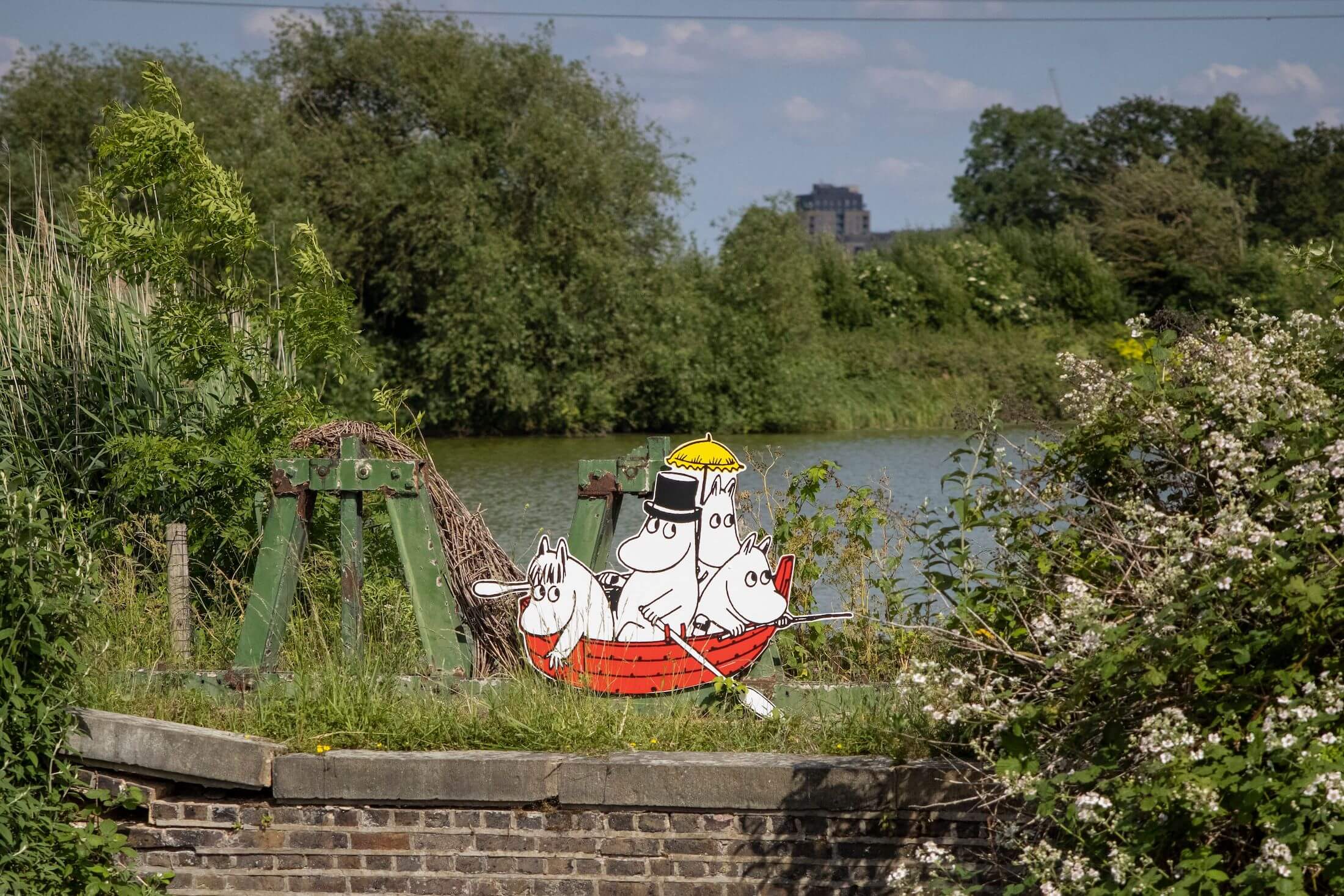
The Moomins, a family of Moominpapa, Moominmama, and little Moomintroll — the character Jansson based on herself — prize openness and warmth. The door to their Moominhouse, at the center of Moominvalley, is forever open. (To read a Moomin book is to be immersed in Moomin everything; call it Moominmania.) Moomintroll’s friends include all kinds of different creatures, mostly fantastical. And even the villains in the Moomin world are somehow sympathetic. Some things, like cold, are dangerous to Moomins. But nothing is truly and completely evil.
Jansson eventually grew tired of her most famous creations. She began writing books for adults, and when she did craft more Moomin stories, gave them a darker tenor than her earliest work. Maybe no adult can live in a realm governed by child-logic, in which all stories turn out well and everyone is loved, for very long. Even when we’d rather deny it, we know the world doesn’t work that way. Most creatures aren’t committed to loving everyone; most conflicts don’t get resolved quickly and empathetically; and sometimes there is, if not absolute evil, horrifying violence and cruelty.
But, 80 years after the Moomins first appeared as a quiet offering of peace in a traumatized world, I’m grateful for the respite they offered me on that recent, soul-tired evening. I left the library happier than I had been, and a little more optimistic. Tove Jansson found a way to connect millions of people to the best of humanity after she herself had witnessed the worst of it. Even in hopeless times, there is a glimmer of something better to be found, for those with the imagination to seek it.

